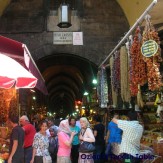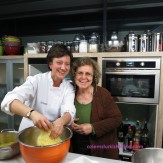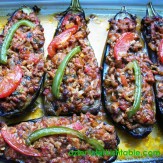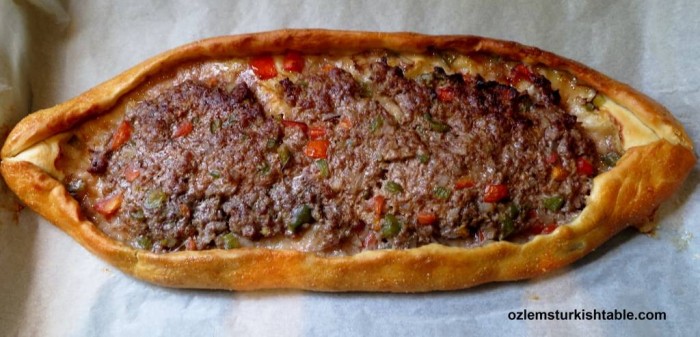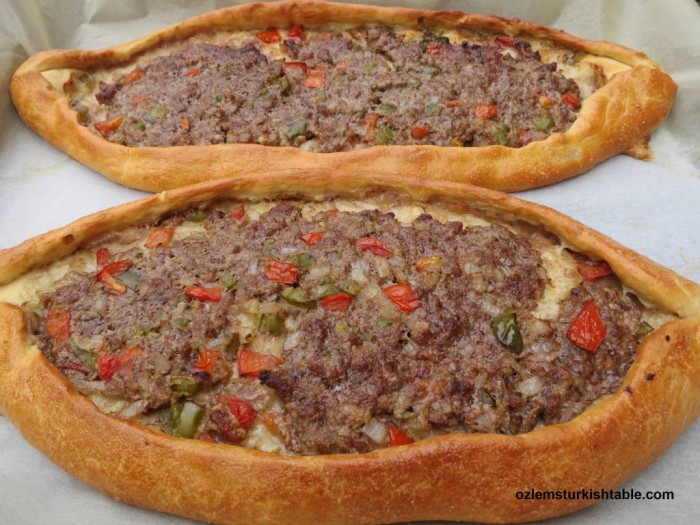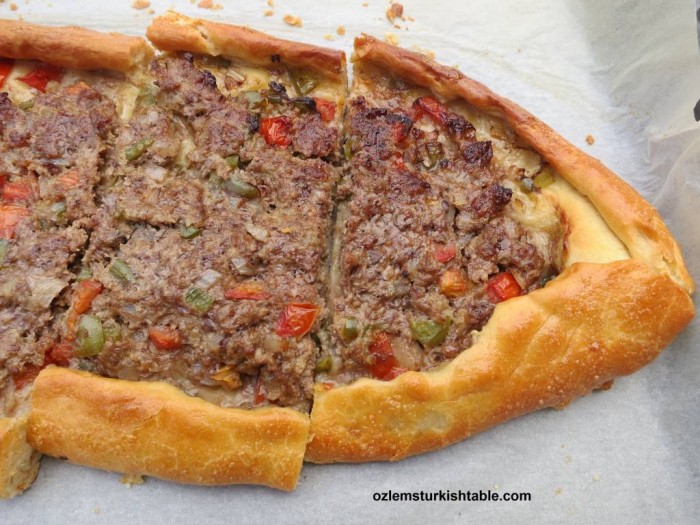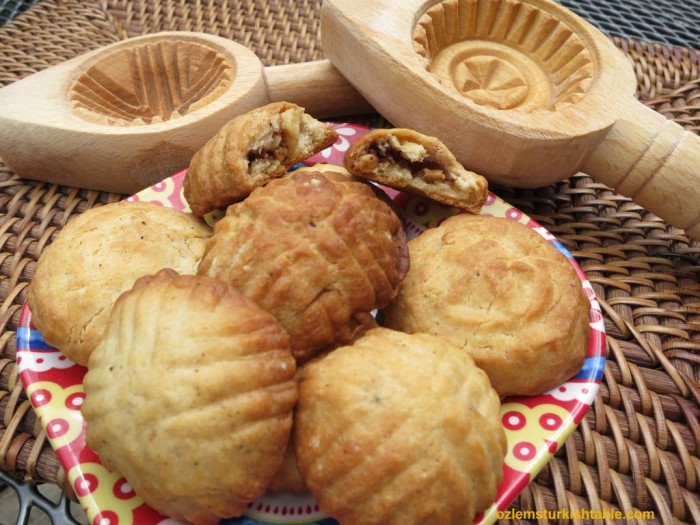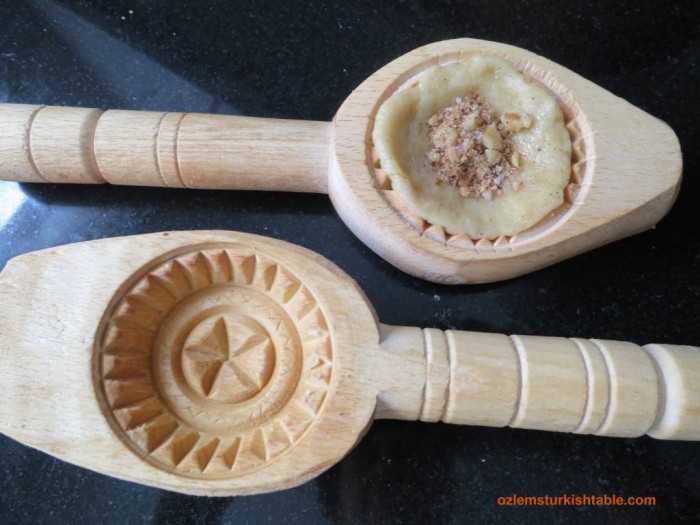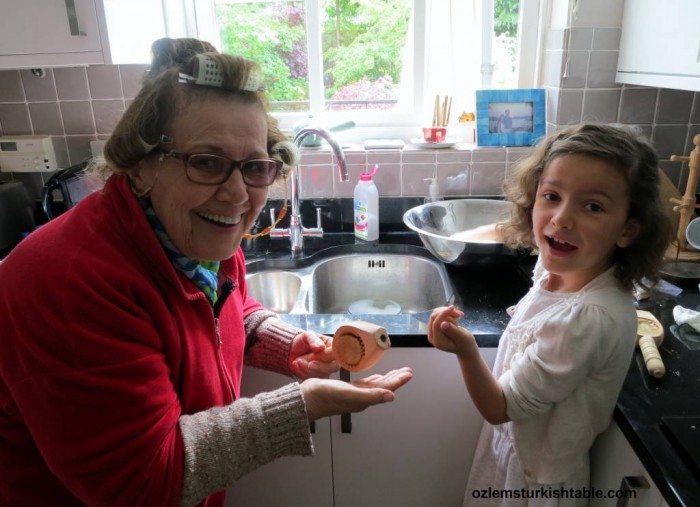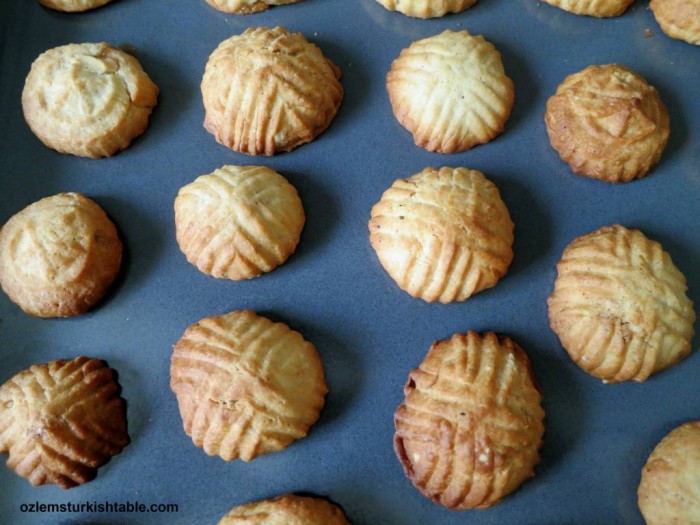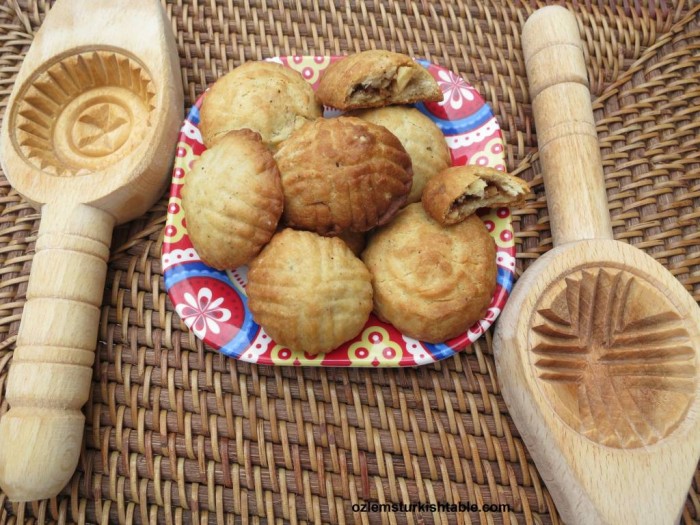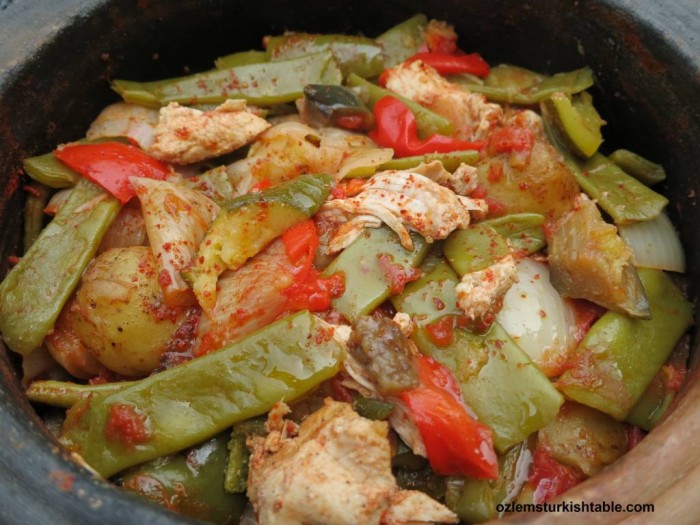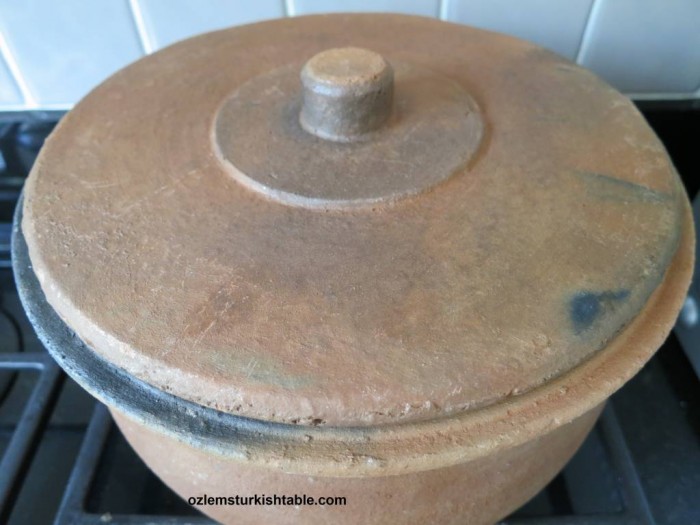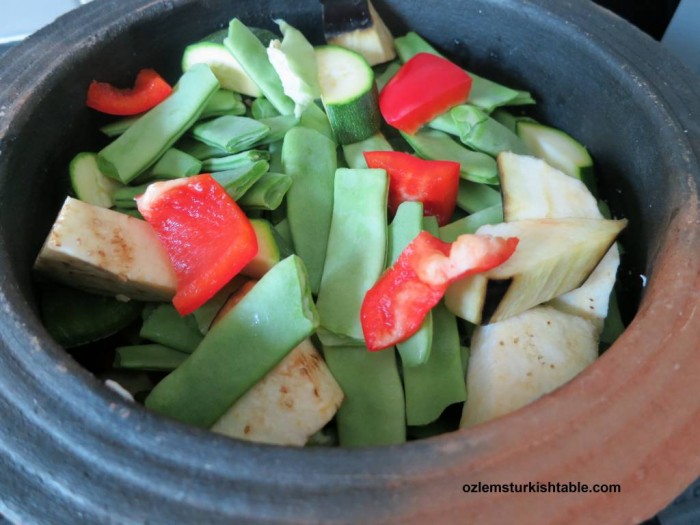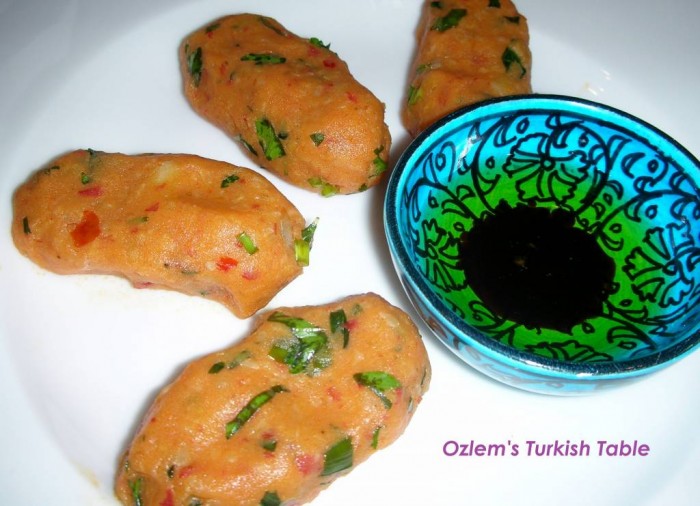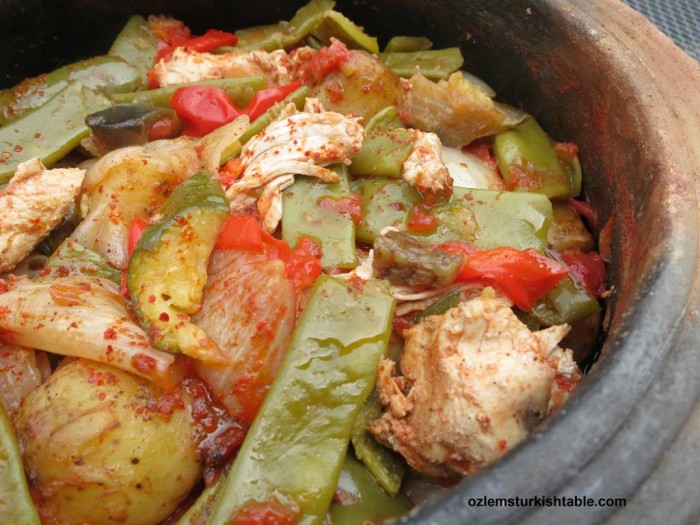This Kiymali Pide, Turkish flat bread with ground meat and vegetables filling, is one of the most popular snacks and our slow cooked “fast food” in Turkey. In Rural Anatolia and at my home town Antakya, locals would prepare the filling and take it to their local bakery, firin, to be baked into delicious flatbreads with this topping over. There are also “Pideci” Turkish flat bread shops that solely bake and serve these flat breads along with piyaz or Coban Salata, Shepherd’s Salad; such delicious flavor combinations.
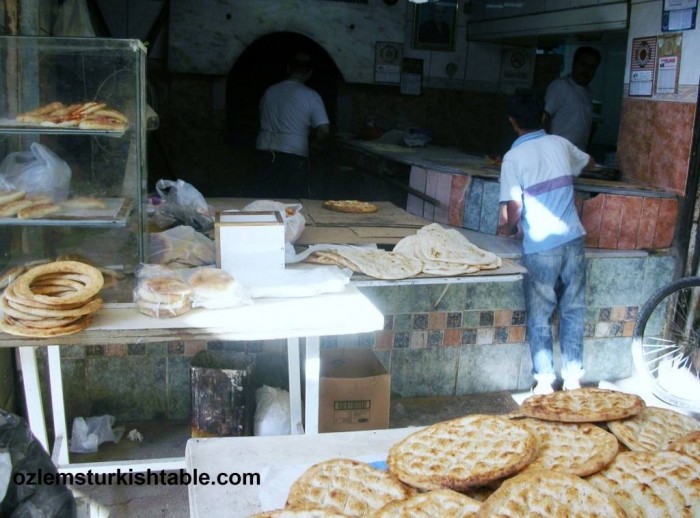
Traditional bakery, firin in Antakya. Bakers not only bake the bread but also flat breads with toppings that customers would bring.
I am often asked the difference between pide and lahmacun, another national favorite. Lahmacun is also a flat bread with ground meat topping, but it is thinner and in round shape. We like to squeeze lemon over it liberally and roll it like a wrap to eat lahmacun. Pide is oval in shape, thicker and we serve in slices.
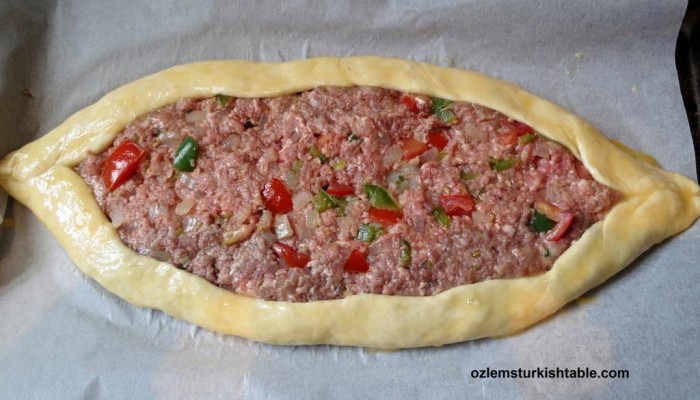
Shaping the flat breads; it is easier to spread the filling while the oval flat bread is on the tray.
Pide can also be made in various toppings; some favorite toppings are ground meat & onion, Turkish kasar (cheddar) cheese & spinach, cheese and pastrami (Turkish dried beef), cheese and Turkish spicy sauage (sucuk). Sometimes an egg or two can be cracked over pide towards the end of baking too, as in some examples of Karadeniz Pidesi a specialty of a pide prepared in Black Sea region.
Making pide is actually much easier than you think – we made it at my recent Turkish cookery class and it was a big hit. I hope you enjoy this delicious Turkish specialty, our version of pizza, packed with flavor and have a chance to recreate at home.
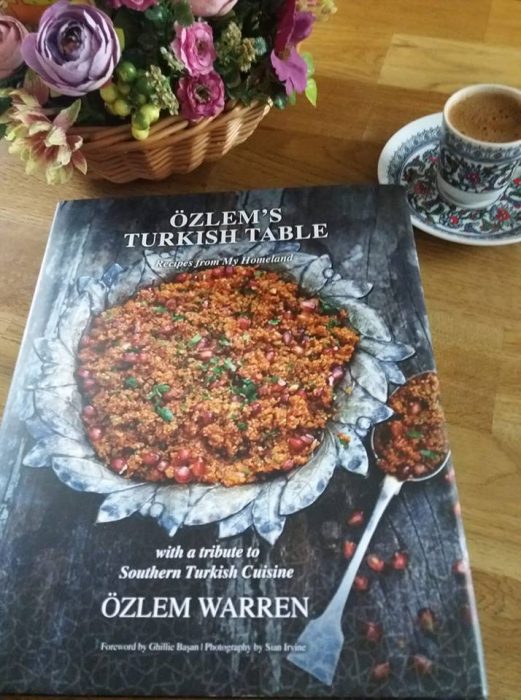
Signed copies of Ozlem’s Turkish Table book, available to order at this link
Both vegetarian pide and with minced/ground meat topping are included at my Turkish cookery book, Ozlem’s Turkish Table, Recipes from My Homeland. Signed copies are now 20 % OFF at this link and delivered worldwide including the US.
Afiyet Olsun,
Ozlem
- For the dough:
- 300 gr/ 10½ oz. / + 2 tbsp. all-purpose plain flour
- 5ml/1 tsp. salt
- 14 gr/4 tsp. dried yeast (2 packs of 7gr dried yeast)
- 1 pinch of sugar
- 8 fl. oz. /1 cup warm water
- 45ml/3 tbsp. olive oil
- For the topping:
- 1 medium onion, finely chopped
- 400 gr/14 oz. ground beef or ground lamb or mixture
- ½ green bell pepper or 1 green pointy pepper, finely diced
- 2 medium tomatoes, deseeded and diced
- 15 ml/ 1 tbsp. lemon juice
- 15 ml/ 1 tbsp. olive oil
- Salt (5 ml/1 tsp. salt is recommended) and freshly ground black pepper to taste
- 1 egg + 15 ml/ 1 tbsp. olive oil to brush the pide
- Preheat the oven to 180 C/ 350 F
- Stir in the dried yeast and sugar in a small bowl and pour in ½ cup warm water. Dissolve the yeast in water, mixing with your fingers. Set aside for the yeast mixture to get frothy for 5 minutes.
- Combine the flour and salt in a large bowl.
- Make a well in the middle and pour in 2 tbsp. olive oil and the yeast mixture.
- Pour in the remaining ½ warm water to the flour mixture. Using your hands, draw in the flour from the sides and work the mixture into a dough.
- Knead for 3 -5 minutes, until you reach a soft, smooth dough. The dough gets sticky as you knead, so pour the remaining 1 tbsp. olive oil and stir in additional 2 tbsp. flour to help shape into a soft dough.
- Place the dough in large bowl and cover with a cling film. Leave it in a warm place for 1 hour; it will be doubled in size.
- In the meantime, prepare your filling. Heat 15ml/1tbsp. olive oil in a wide heavy pan and stir in the onions and peppers.
- Sauté the onions and peppers for 2-3 minutes over medium heat, until they start to soften. Stir in the tomatoes and sauté for another 2 minutes. Pour in the lemon juice and season with salt and ground black pepper. Turn the heat off.
- Place the ground meat in a bowl and combine the cooked vegetables with the ground meat, mix well. The topping is ready.
- Once the dough is risen, place the dough on a lightly floured surface. Knead the dough for a minute then divide the dough into two pieces and roll into two balls.
- On a lightly floured surface, roll the dough balls into 2 oval shapes of 20 cm x 40 cm (about 8”x16”), with ½ cm (0.2”) thickness.
- Line a large baking tray with baking paper and place the 2 oval flat bread dough on the tray.
- Spread the filling evenly over the 2 flat breads, leaving 2 cm at the edges as a border with no filling (it is easier to spread the filling while the oval flat bread is in the tray).
- Fold in the sides to act as border to keep the filling intact. Squeeze the oval dough at each end to make it pointy.
- Beat an egg in a small bowl and mix it with 1 tbsp. olive oil. Brush the edges of dough with this mixture.
- Bake for 25 - 30 minutes, until the pides are golden brown and crispy at the edges.
- Once cool, cut into slices and serve.

